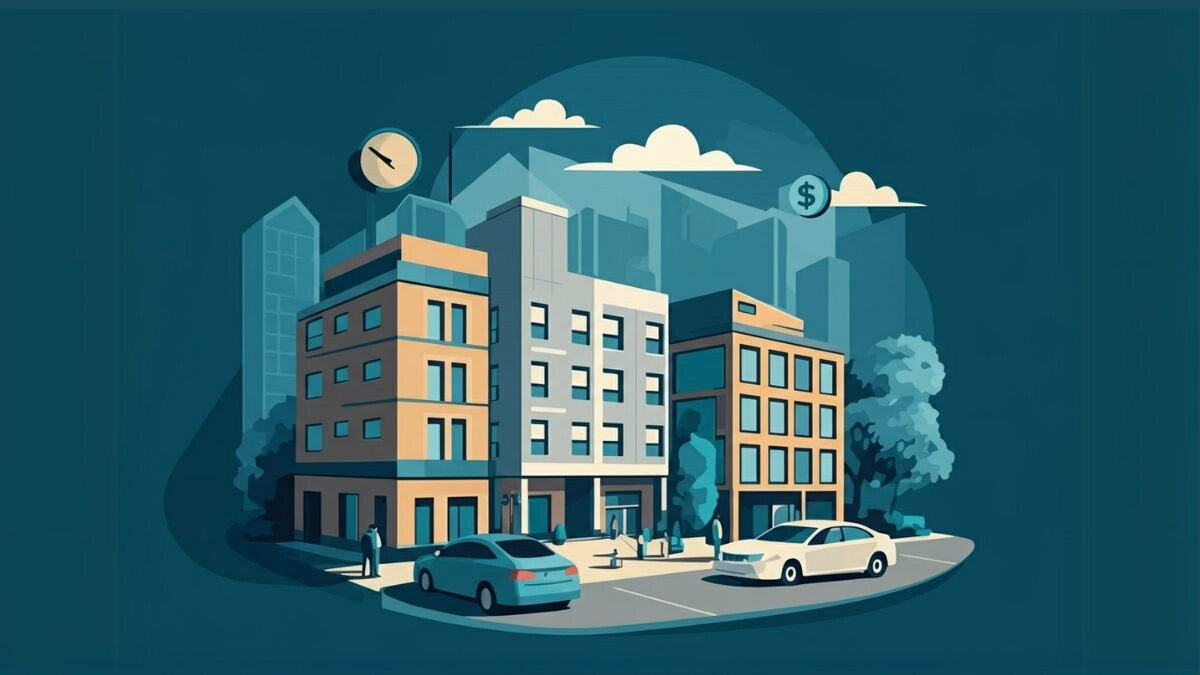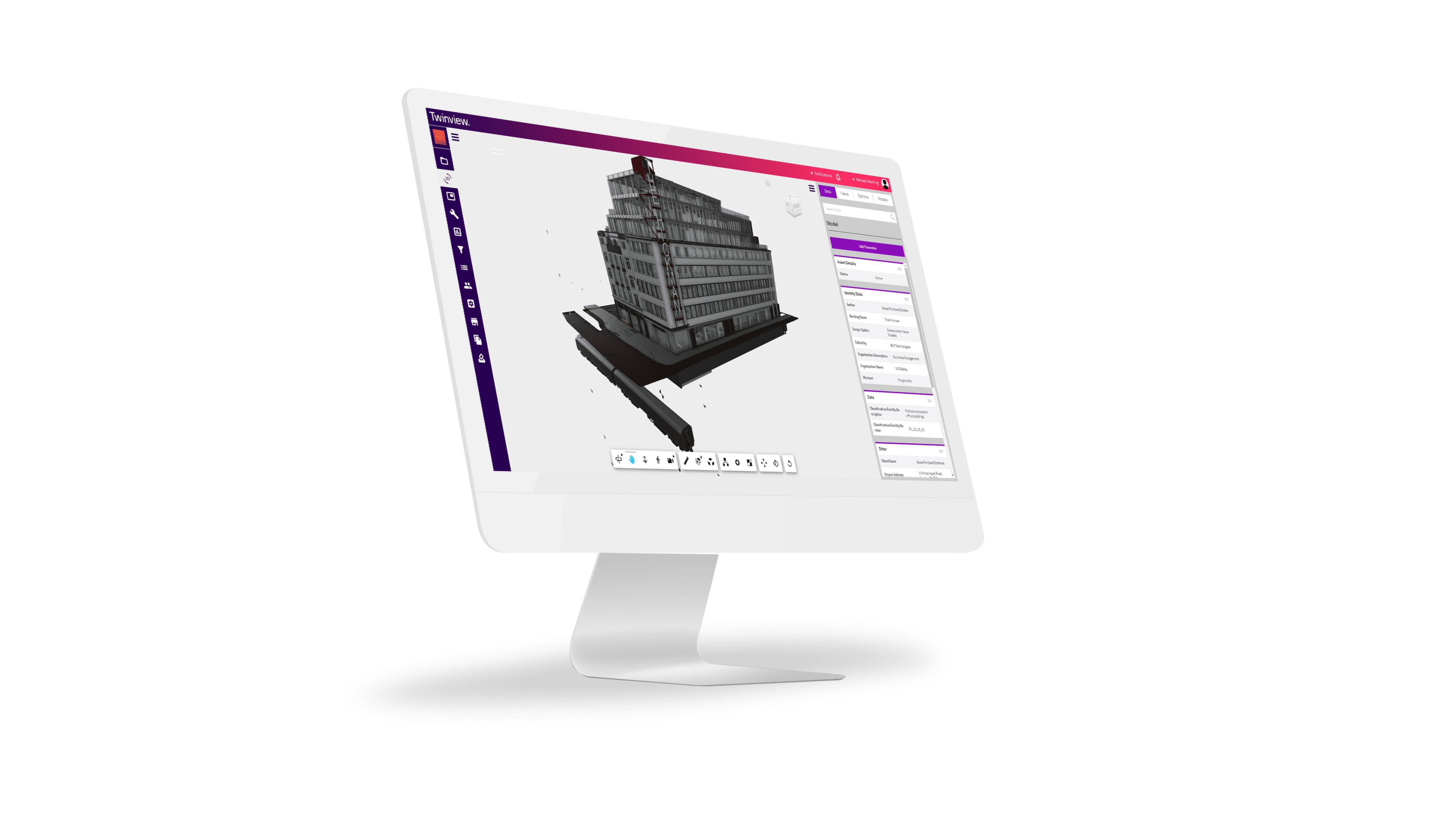10 Nov 2021 | Industry Insights
Decarbonising a building with Twinview

COP26 has given a sense of urgency to the climate crisis. As the biggest emitter of global greenhouse gases, the decarbonisation of the built environment will play a vital role in the success of reaching Net Zero by 2050.
The problem with buildings
Accounting for almost 40% of total carbon emissions, our buildings will become a key battleground for ensuring that our planet reverses the effects of global warming.
New buildings tend to be built to carbon-efficient standards whereas existing buildings are where the real problem lies. It is estimated that 80% of the buildings that will be here in 2050 already exist today and most are extremely energy inefficient.
Why Twinview?
One of the key solutions to operating commercial buildings more sustainably is the adoption of digital technology such as Twinview’s digital twin. The use of IoT and sensors to track metrics like the number of occupants in a space, along with sophisticated artificial intelligence, means that patterns and trends can be identified which helps a business to make better and more informed decisions around their energy consumption.
Replacing a building’s bulbs with LED lighting or ensuring that its lighting and heating functions operate via a timing system only offer marginal improvements. A building’s performance can be optimised, even whilst reducing costs, by learning how often and how spaces function through the adoption of Twinview.
Reporting of siloed data
Twinview unlocks access to often-siloed building data. Buildings have always produced huge amounts of data via their BMS and Twinview aggregates this information onto a single platform, giving building owners a greater understanding of their building’s performance.
By learning how our buildings operate we can ensure they are run more sustainably, reducing costs whilst improving efficiency and the occupier experience.
Dashboards
One of the key features of Twinview is the use of intuitive dashboards that display the information most important to building owners, such as energy consumption across single buildings or entire portfolios.
Dashboards give the user the opportunity to have a complete breakdown of how their building is consuming energy such as heating, cooling and lighting, furthermore, Twinview can also predict how much energy the building will consume going forward based on current usage levels and by identifying patterns. Twinview can be used to identify opportunities to reduce energy use and become more efficient. This is vital for building owners as they can gain an insight into estimated energy costs for a certain period of time and make decisions to move their business closer to Net Zero.
Any device, anytime, anywhere
Twinview is hosted on a cloud-based platform ensuring that a building’s data can be easily accessible from anywhere on any device with access to thousands of assets at the click of a button. The Twinview platform is optimised for desktop, tablet and mobile which makes it perfect for the digital transformation of facilities management.
By making your building’s asset information easily accessible, Twinview improves the efficiency of managing a building which, in turn, inevitably improves the occupier experience too.
Twinview is a browser-based digital twin platform for the property sector connecting building systems’ data to a 3D model viewed on a single dashboard. Twinview becomes your first step to achieving Net Zero by providing continuous live data and an optimised building performance whilst reducing costs and improving the user experience. Book a demo today.
Related insights

Industry Insights
Understanding Renters' Rights: How Digital Twins Improve Compliance and Property Management
The recent introduction of the Renters' Rights Bill in the UK aims to improve the relationship between tenants and landlords. As part of a broader effort to ensure fairer and more transparent living conditions, this bill ensures that rental properties meet specific standards, including affordability, maintenance, and habitability. Landlords and property managers now face new challenges in complying with evolving regulations. We explore how Digital Twins could support with these new compliance requirements.
Read more

Industry Insights
UK AI Investment Surge: Opportunities and Challenges for the Property Sector
The UK government's recent surge in AI investment promises to reshape numerous industries, and the property sector is no exception. By committing to driving AI development, the UK is positioning itself as a leader in technological innovation. Property professionals, from developers to facility managers, must understand AI's evolving landscape to capitalise on its opportunities and navigate its challenges. This article explores how the government's increased AI funding can impact the property sector, focusing on AI's potential benefits, obstacles, and real-world applications.
Read more

eBooks
The Value of Property Digital Twins in the NHS: Aligning with Government Policies and AI Requirements
The UK’s National Health Service (NHS), one of the world's largest publicly funded healthcare systems, manages a vast and complex estate, including over 1,200 hospitals, thousands of clinics, GP surgeries, and administrative buildings. Managing such an extensive estate efficiently is essential to delivering high-quality patient care, meeting sustainability targets, and ensuring the financial viability of the healthcare system. With increasing demand, financial constraints, and sustainability commitments such as the Net Zero NHS plan, there is a pressing need to optimise how NHS facilities are managed. One of the most promising innovations in this regard is the adoption of Property Digital Twins (PDTs) virtual replicas of physical assets that provide real-time data on building performance, environmental conditions, and operational efficiency. Learn how by embracing Property Digital Twins, the NHS can transform its approach to estate management, achieving significant cost savings, enhancing patient care, and contributing to national sustainability goals.
Read more
Book your one-on-one appointment with one of our specialists.
info@twinview.com
+44 (0)844 800 6660
London
24 Greville Street
Farringdon
London
EC1n 8SS
Newcastle
Spaceworks
Benton Park Road
Newcastle upon Tyne
NE7 7LX


